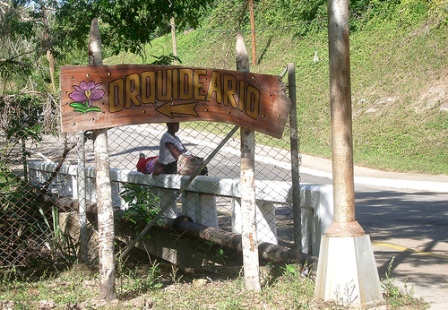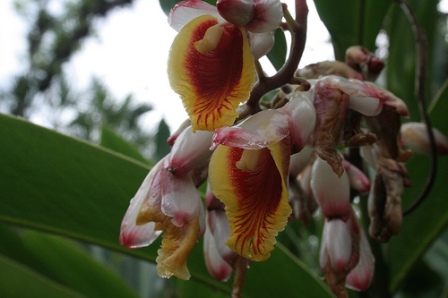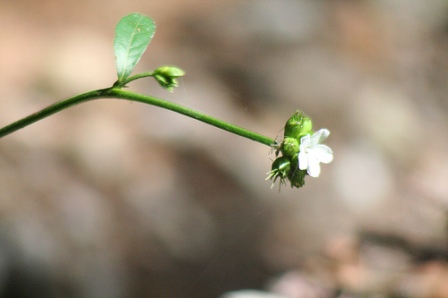Cuba-Sri Lanka Bond over Orchids

HAVANA TIMES, Sept. 4 – The orchid collection of the Soroa Orchid Garden – the largest of its type in Cuba, with hundreds of varieties of this unique species – will be enriched in the next few months with a donation of orchids endemic to Sri Lanka, Colombia and Jamaica.
The center’s manager Luis Enrique Villa Lon announced that the garden, located in the western Cuban province of Pinar del Río, will soon surpass 700 species with the imminent arrival of the new specimens (currently the park amasses 472 varieties of both Cuban and exotic orchids).
The donations will be a significant contribution to the center, which suffered the battering of two hurricanes in 2008, said the botanist.
Villalon noted that in February 2010, there are plans for the inauguration of an exposition area dedicated to the Socialist Republic of Sri Lanka. In that space will be grown the national tree and flower that distinguishes that country, along with local indigenous plants of ornamental value.
The initiative, he said, is the fruit of on-going collaboration between that nation of the Indian subcontinent and the Soroa Orchid Garden.

Villalon commented that almost one year since its lashing by hurricanes Gustav and Ike, Soroa now shines in its customary splendor amid the Sierra del Rosario Mountains, one of four UNESCO-approved biosphere reserves on the island.
Some of the collections and species of orchids that grew under the open sky disappeared with the storms, though the main varieties remain intact.
The gardens and shelters damaged by the intense wind and rain have been completely restored, as has the “big house” where once lived the former owner, Spanish lawyer Tomas Felipe Camacho.
Soroa Orquidiario
In the park, 70 kilometers to the west of Havana, there are botanical relics such as the Palm Cork, which dates back to the Jurassic period, as well as valuable examples of insular and world flora.

The construction of the Soroa Orchid Garden extended from 1943 to October 1952 at a cost of 1.5 million pesos, which was invested by Camacho, a native of the Canary Islands. The main house now serves as a research and exhibition center, and is also used for experimentation by the Cuban ministries of Education and Science.
The park possesses a library that specializes in the flowers, and has valuable volumes that date back to the last century.
Orchids constitute their own family of plants (Orchidaceae), with more than 25,000 species scattered around the entire planet, although tropical regions enjoy the richest share. This figure represents approximately ten percent of all flowering plants.
The name orchid comes from modern Latin term “orchidaceae,” derived in turn of the old Latin “orchis.” This designation was used by the philosopher Teofrasto when referring to a plant with a pair of bulbs similar to testicles – it was, of course, an orchid. The term was later adopted by Dioscorides when he prepared his manuscript on medicinal plants in which he attributed the plant as having properties of an aphrodisiac.

The name “orchis” was also used by the scholar Linneo in his work Species Plantarum (1753) to designate a genus of extra-tropical orchids; at present there are 60 known species of these. Orchids are herbaceous plants with diverse characteristic that can or not present a lump in the shaft, known as a pseudo-bulb.
According to their form of growth, the flowers are classified into two basic groups: monopodial and simpodial. The leaves vary greatly size and consistency, and we can even find leafless varieties.
In Cuba there exist approximately 300 native species, though as studies of the island’s orchids continue to advance, new species are being discovered.
Orchids are present in practically all plant formations of the island. However, depending on the particular species, they prefer to live in certain places, seeking out the appropriate environmental conditions.
Mountainous regions are richest in orchids. In fact, some species can exist only in areas 600-700 meters above sea level (for example, representatives of the genera Lepanthes, Stelis, Pleuro-thallis and Dichaea).
The eastern region of Cuba, with mountain ranges in the north and the Sierra Maestra, possesses a great wealth. Sites like the Grand Pierdra constitute veritable natural gardens. In the central part of the country, the Sierra del Escambray stands out; and in the west, the Guaniguanico mountain range is a prime site for discovering orchids.
